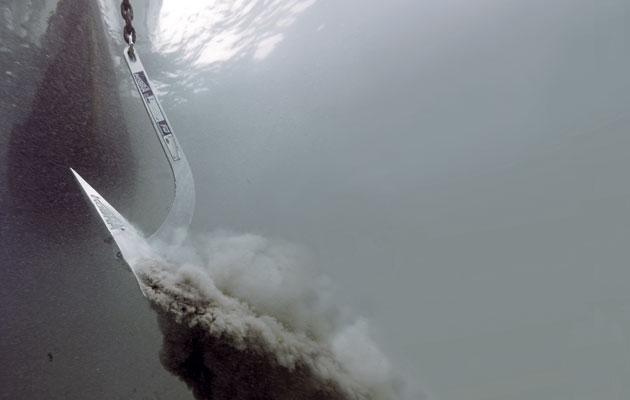Do you know how close you can get when anchoring a boat close to shore? James Stevens answers your seamanship questions
Anchoring a boat near the shore: how close can I get?
Question:
It’s a sunny summer day. Toby and Helen decided to take their 10m production yacht to a favorite bay and drop anchor for lunch.
The conditions are ideal, a gentle offshore wind, little swell and the tidal currents in the bay are very weak.
Unsurprisingly, they’re not the only ones with the same idea; the sandy bay is full of anchored yachts.
However, when they arrive, a yacht just departs from the best position, near the coast.
Helen watches the tides. The nearest port with a tide table is 15 miles away and gives the low tide time as 1300 BST and the height as 0.3m. Their yacht draws 1.9 m.
Toby looks at his chart plotter, he figures if he stays on or off the 2m outline he should be fine in calm conditions.
It works its way by keeping a close watch on the chart plotter until it is on the 2m contour.
There seems to be room to anchor.
Helen takes the helm and Toby prepares the anchor by lowering about 20m of chain.
The yacht settles at anchor. The sun is hot, the beach very close, it’s time to swim ashore. But is the boat safe?
Continued below…
Yachting Monthly’s experts share the most common issues they’ve faced while anchoring and how they’ve solved the problems to get out of it

When it comes to boat anchoring, many people have their own take on the best boat anchoring techniques for…

A good ground tackle and understanding how to anchor properly opens up the possibility of spending the night in great bays and…

Which of the many anchor models best suits your boat? Vyv Cox helps you choose the best anchor for…
Answer:
They assumed that a tide table 12 miles away would be accurate where they are.
In many places standard port times and heights vary only slightly from 15 miles along the coast.
Other stretches of the UK coast have really big differences in range over relatively small distances.

James Stevens, author of the Yachtmaster Handbook, spent 10 years as RYA’s Yachtmaster Training Manager and Chief Examiner
For example, the range of springs at Yarmouth, Isle of Wight, is 2.2m, while at Portsmouth, 18 miles away, it is 3.9m.
The main reading they missed is depth at anchor.
They assumed the map was accurate to a small fraction of a meter in the bay.
Their plotter gives a position with an accuracy of a few meters but the depth display of the map is not as good as the last survey, which in a bay not used by commercial shipping probably was some time ago. time.
Therefore, there is no guarantee that the 2m contour line, probably drawn freehand by the hydrographer, is actually telling the truth.
Although the map is essential to see if there are any dangers such as rocks and to establish the nature of the seabed.
They must first establish the times and heights of high and low water in the bay as best they can.
The plotter may give this information or it may have to interpolate between two ports with tidal information.
They then need three key figures.
The distance the tide will fall between the arrival time and low tide, the draft of the yacht and the safe distance required at low tide.
Add these three elements together, anchor yourself to a greater depth and stop focusing on the 2m outline.
Is the boat safe? More than likely, but not a certainty.
I enjoyed reading Anchoring a Boat Close to Shore: How Close Can I Get??
A subscription to Yachting Monthly magazine costs about 40% less than the cover price.
Print and digital editions are available through Magazines Direct – where you can also find the latest offers.
YM is packed with information to help you get the most out of your time on the water.
-
-
- Take your seamanship to the next level with tips, advice and skills from our experts
- Unbiased in-depth reviews of the latest yachts and equipment
- Cruising guides to help you reach those dream destinations
-
follow us on Facebook, Twitter and Instagram.

